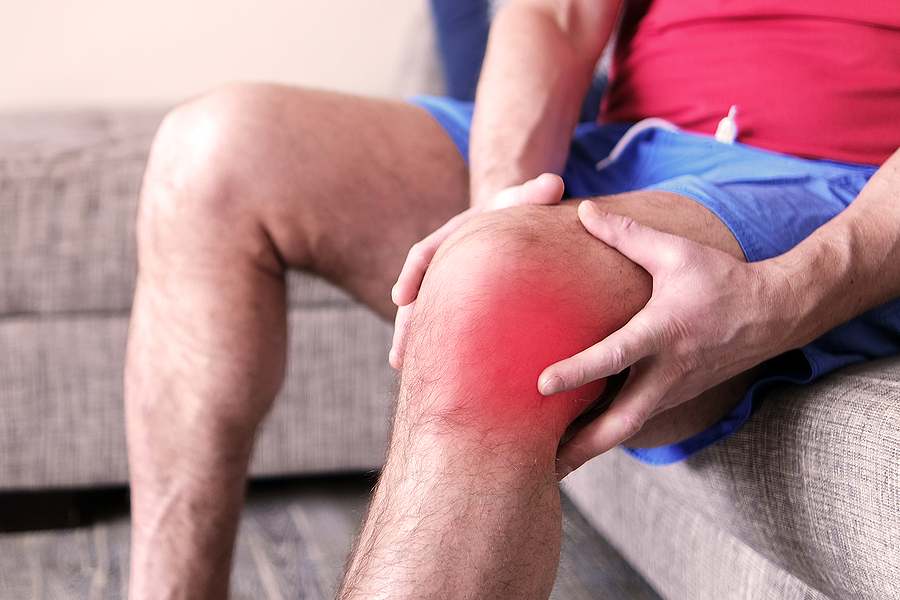Arthritis is the swelling and tenderness of one or more joints, and when it affects the knee, it can severely limit movement, function, and quality of life. The knee joint is particularly vulnerable to wear and tear due to its weight-bearing role, making knee arthritis a common ailment among millions worldwide. However, the silver lining is that there’s an array of treatments available, from lifestyle modifications to surgical interventions, offering hope and relief to those afflicted. This blog aims to guide readers through the best treatments for knee arthritis, providing a holistic approach to managing and potentially overcoming the condition.
Contents
Understanding Knee Arthritis
 Knee Arthritis is a degenerative condition marked by the inflammation of one or more joints in the knee. And, leading to symptoms like pain, swelling, stiffness, and decreased range of motion. The knee joint, being a primary weight-bearing joint, is especially susceptible to wear and tear over time. The most common type of knee arthritis is osteoarthritis. It is characterized by the gradual breakdown of the cartilage that cushions the ends of bones in the joint. As this cartilage wears away, bones begin to rub against each other, causing pain and other symptoms.
Knee Arthritis is a degenerative condition marked by the inflammation of one or more joints in the knee. And, leading to symptoms like pain, swelling, stiffness, and decreased range of motion. The knee joint, being a primary weight-bearing joint, is especially susceptible to wear and tear over time. The most common type of knee arthritis is osteoarthritis. It is characterized by the gradual breakdown of the cartilage that cushions the ends of bones in the joint. As this cartilage wears away, bones begin to rub against each other, causing pain and other symptoms.
There are other forms of arthritis that can affect the knee, such as rheumatoid arthritis and post-traumatic arthritis. Rheumatoid arthritis is an autoimmune condition where the body’s immune system attacks its tissues, including the joints. Post-traumatic arthritis, on the other hand, develops after an injury to the knee. Regardless of the type, knee arthritis can greatly impact an individual’s quality of life by limiting movement and causing chronic discomfort.
What Are The Best Treatments For Knee Arthritis?
The best treatments for knee arthritis typically focus on reducing pain, improving joint function, and slowing the progression of the disease. Here’s an overview of the most effective treatments available:
Medications
- Pain Relievers (Analgesics): These primarily address pain without targeting inflammation. Acetaminophen (Tylenol) is a popular choice. They provide relief by blocking the transmission of pain signals to the brain.
- Nonsteroidal Anti-inflammatory Drugs (NSAIDs): These drugs serve a dual purpose by alleviating pain and reducing inflammation. While over-the-counter options like ibuprofen (Advil, Motrin) are commonly used, there are stronger prescription NSAIDs available. However, long-term or excessive use can lead to gastrointestinal issues, cardiovascular risks, or kidney problems.
- Disease-modifying antirheumatic drugs (DMARDs): For more systemic conditions like rheumatoid arthritis that can affect the knees, DMARDs can be used. They act by modifying the underlying disease rather than treating symptoms alone. This can help prevent joint damage.
- Biologic Agents: These are sophisticated drugs derived from living cells and work by targeting specific immune responses in the body. They are often used when DMARDs are ineffective. Examples include tumor necrosis factor (TNF) inhibitors like etanercept (Enbrel) and adalimumab (Humira).
Physical Therapy

- Strengthening Exercises: By strengthening the muscles around the knee, the joint can be better supported, helping to offload some of the stress and pressure. Common exercises include leg presses, quad sets, and mini squats.
- Flexibility Workouts: Maintaining the knee’s range of motion is critical in preserving its function. Gentle stretching exercises can help ensure flexibility, reducing stiffness associated with arthritis.
- Modalities: Physical therapists might use ultrasound, electrical nerve stimulation, or heat/cold treatments to aid pain relief and muscle relaxation.
- Functional Training: This involves teaching patients more efficient and less painful ways to perform daily activities, promoting joint protection.
Injections

- Corticosteroids: These powerful anti-inflammatory agents are injected directly into the joint to provide rapid but temporary relief. They can decrease swelling and pain but are usually limited to a few times a year due to potential side effects.
- Hyaluronic Acid: Also known as viscosupplementation, these injections aim to boost the cushioning properties of synovial fluid in the knee. This can provide pain relief and improve joint function for months. Examples include Synvisc and Hyalgan.
- Platelet-rich Plasma (PRP): Harvested from the patient’s blood, PRP contains growth factors that might help heal damaged tissue. While research is ongoing, some patients report relief after PRP injections.
Supportive Devices
- Braces: There are various braces, like the ‘unloader’ type, designed to take the weight off the affected side of the knee, redistributing it to the healthier part. This can decrease pain and improve function.
- Orthotics: Custom-made shoe inserts can aid in balancing weight distribution, potentially reducing the stress on arthritic knees. They can correct gait abnormalities and offer added cushioning for comfort.
- Canes and Walkers: For some, using a cane or walker can help provide additional support, especially during flare-ups or when pain is more severe.
Alternative Therapies
- Acupuncture: This traditional Chinese medicine technique uses thin needles inserted into specific points on the body to alleviate pain. It’s believed to work by redirecting energy and increasing blood flow, although the exact mechanisms are still being researched.
- Dietary Supplements: First are – Glucosamine and Chondroitin, these naturally occurring compounds are crucial for cartilage health. Some people claim that taking these supplements reduces knee arthritis pain and improves function, but research results are mixed. Another can be – Methylsulfonylmethane (MSM), this organic sulfur compound might have anti-inflammatory effects, and some believe it helps alleviate arthritis pain.
- Tai Chi and Yoga: These low-impact exercises can help with flexibility and joint mobility. Their meditative and repetitive motions can also offer mental well-being benefits, which can indirectly help cope with chronic pain.
Surgical Procedures
- Arthroscopy: This minimally invasive surgery involves inserting a tiny camera and small instruments into the knee joint through small incisions. It can be used to remove or repair torn meniscal tissue and clear out inflamed synovial tissue. However, for severe arthritis, its benefits are often temporary.
- Osteotomy: This procedure involves reshaping the bones either above or below the knee to shift weight away from a damaged part of the knee. It’s often used for younger patients as a way to delay the need for a joint replacement.
- Joint Replacement (Arthroplasty): In cases of severe arthritis where other treatments haven’t worked, the damaged joint may be replaced with an artificial one made of metal and plastic. Total knee replacement replaces the entire joint, while partial knee replacement replaces only a portion.
Lifestyle and Home Remedies
- Heat and Cold: Applying heat can relieve stiffness, while cold packs can reduce pain and swelling. Alternating between the two or using them at different times of the day can be effective.
- Movement and Exercise: Regular movement, even if minimal, can help prevent joint stiffness. Low-impact exercises like walking, swimming, or cycling can help maintain joint function without causing undue stress.
- Joint Protection: Using knee pads or cushioned mats can help protect the knee joint during activities like gardening or other kneeling tasks.
Emerging Treatments
- Stem Cell Therapy: This involves using stem cells (often derived from the patient’s body) to promote the repair of damaged tissue. Early research suggests potential benefits in regenerating cartilage tissue, but it’s still under study for safety and efficacy.
- Gene Therapy: Research is underway to explore how altering specific genes can help reduce the progression of arthritis or even promote the regeneration of joint tissues.
Remember that the severity and type of arthritis, individual health factors, and personal preferences will dictate the best treatments for knee arthritis. Always consult with healthcare professionals before making decisions about treatments or changes to one’s lifestyle.
What Are Some Ways To Prevent Knee Arthritis?
 Preventing knee arthritis involves a combination of lifestyle choices and interventions aimed at preserving joint health and function. Here are some effective strategies to help reduce the risk of developing knee arthritis:
Preventing knee arthritis involves a combination of lifestyle choices and interventions aimed at preserving joint health and function. Here are some effective strategies to help reduce the risk of developing knee arthritis:
- Maintain a Healthy Weight
Excess body weight places additional stress on weight-bearing joints like the knees. Reducing and maintaining a healthy weight can decrease the risk of developing osteoarthritis and can slow its progression if you already have it.
- Stay Active
Regular exercise strengthens the muscles around your knee. That can help support and stabilize the joint. Focus on low-impact activities like swimming, walking, cycling, or elliptical training.
- Avoid Repetitive Stress on the Knees
High-impact activities or those that put repetitive strain on the knee, such as long-distance running or jobs requiring frequent kneeling, can increase the risk. If you engage in these activities, use proper techniques and equipment to reduce joint strain.
- Stay Flexible
Incorporate flexibility exercises or activities like yoga or tai chi into your routine. They can help maintain joint mobility and reduce stiffness.
- Wear Proper Footwear
Shoes that support your arches and cushion your steps can minimize stress on your knees. If necessary, consider custom orthotics.
- Strengthen Your Core
Strong hip and core muscles can help ensure proper leg alignment and reduce the strain on your knees.
- Nutrition
Consuming a balanced diet rich in vitamins and minerals, particularly vitamins C and D, omega-3 fatty acids, and antioxidants, can support joint health. Some also believe that glucosamine and chondroitin supplements can promote joint health, but the evidence is mixed.
- Regular Check-ups
Regularly visiting a healthcare professional, especially if you have risk factors or an early onset of symptoms, can help detect and address potential problems early on.
While it’s impossible to guarantee prevention, these strategies can significantly reduce the risk or delay the onset of knee arthritis. Hence, if you have concerns about your knee health, it’s wise to consult with a healthcare professional for tailored advice.
Conclusion
Knee arthritis is a prevalent condition that affects countless individuals worldwide, impacting their quality of life and daily mobility. While its onset can be influenced by various factors, both genetic and environmental, understanding the best treatments for knee arthritis and adopting preventative measures can significantly mitigate its impact. Ultimately, by prioritizing joint health through weight management, regular exercise, and informed lifestyle choices, individuals can proactively safeguard their knees.
As with all health matters, early detection, awareness, and a holistic approach to care remain paramount in navigating the challenges of knee arthritis effectively. If you’re experiencing Knee pain, physical therapy for knee pain at PhysioMantra can help: Book an online physical therapy session.



